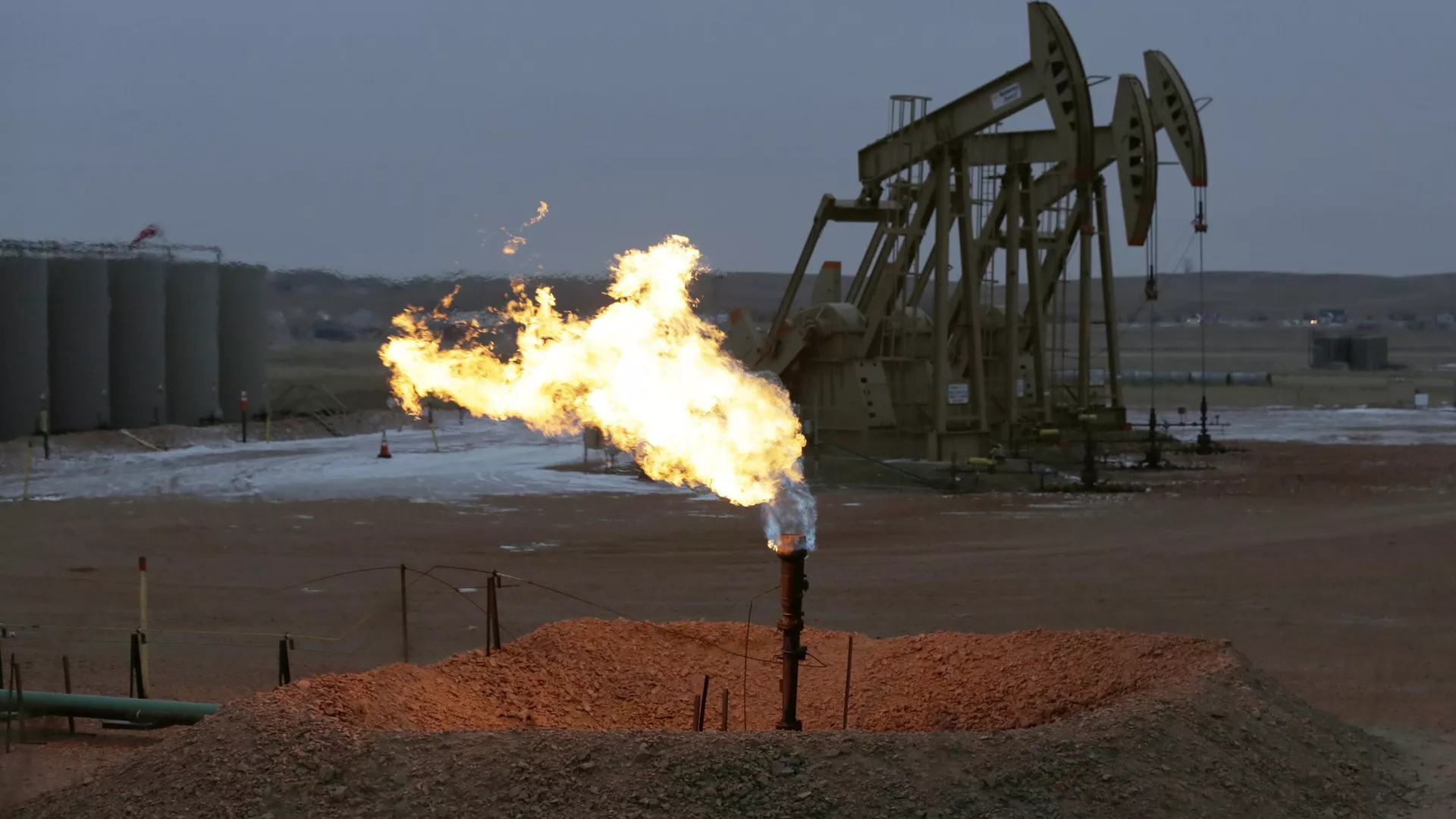Over the course of just two decades, methane traps about 80 times more heat than carbon dioxide (CO2) but lasts in the atmosphere for about a decade instead of hundreds of years like CO2, the US EPA says.
A recent study found that about 3% of US gas produced is wasted and released into the air, compared to the Environmental Protection Agency’s (EPA) figures of just 1%. That leakage is also responsible for causing $9.3 billion in yearly climate damage, the study calculated, and amounts to 6.2 million tons per hour in leaks during the day alone.
According to the study’s lead author, the escaped emissions were produced throughout oil and gas production and delivery systems, beginning with gas flaring. Gas flaring is a term for burning off the gas which comes out of the ground while drilling for oil. The World Bank estimated that in 2021 enough gas flaring would have been enough to power the whole of sub-Saharan Africa.
But there were also substantial leaks throughout the rest of the system, including tanks, compressors and pipelines, the lead author added.
The issue is also happening across the world. In 2023, large methane emissions events around the world grew 50% compared to the previous year—all based on satellite detection. And more than 5 million metric tons were found in major fossil fuel leaks according to a Global Methane Tracker 2024 report released on Wednesday by the International Energy Agency.
The report found that overall, world methane emissions rose slightly in 2023 to 120 million metric tons.
“This is really an opportunity to cut emissions quite rapidly with targeted efforts at these highest-emitting sites,” said Evan Sherwin, an energy and policy analyst at the US Department of Energy’s Lawrence Berkeley National Lab and a lead author of the study which was published in the journal Nature. “If we can get this roughly 1% of sites under control, then we’re halfway there because that’s about half of the emissions in most cases.”
Sherwin said the 3% leak figure they found in their study is the average for just six regions looked at in the US and is not the national average, which still needs to be calculated.
Studies like these are relying more on satellites to measure the amount of methane released rather than trusting numbers provided by company estimates. Earlier this month the Environmental Defense Fund, an environmental organization, launched the MethaneSAT observation satellite into orbit to monitor methane emissions.
According to Sherwin, the biggest leaks were found in the Permian basin of Texas and New Mexico.
“It’s a region of rapid growth, primarily driven by oil production,” Sherwin said. “So when the drilling happens, both oil and gas comes out, but the main thing that the companies want to sell in most cases was the oil. And there wasn’t enough pipeline capacity to take the gas away.”
Rob Jackson, a Stanford University climate scientist not involved in the study, says these miscalculations have been occurring for years.
“For more than a decade, we’ve been showing that the industry emits far more methane than they or government agencies admit,” Jackson said. “This study is capstone evidence. And yet nothing changes.”




